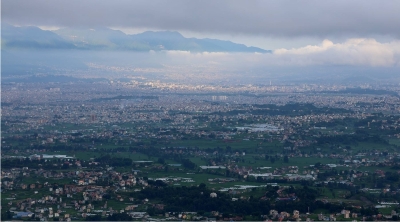TOPICS: China goes for ‘green GDP’
China’s leaders want their national economy to grow not only fast but to grow green. They have asked planners to develop a new indicator to measure the country’s growth, a ‘green GDP’ that would account for the costs of environmental impact and resource consumption. The emphasis reflects China’s shifting priorities from sustaining growth at all costs to realising a more sustainable growth.
Beijing has unveiled a draft blueprint for the country’s economic development in the next five years that stresses the need for conservation of natural resources. Two indicators that have defined China’s economic miracle for the last 20 years — the spectacular economic growth and the increase in disposable incomes would no longer be enough to assess performance of government officials. By making local leaders accountable for resource squandering and pollution Beijing hopes to put the brakes on rapidly enfolding environmental destruction.
But in their ‘go green’ quest, Chinese leaders face a growing challenge — how to enforce environmental standards without crippling the economic growth. Saving the country’s rivers has become a rallying cry for both environment-friendly government officials and green activists as the nation comes to grips with the reality that more than half of the water in China’s seven largest rivers is contaminated. But saving China’s rivers means the energy-hungry country would continue to rely on coal-fired power stations that supply more than two-thirds of its energy, spewing out vast amounts of pollutants. Pollution levels can more than quadruple within 15 years if the country doesn’t curb its rapid growth in energy consumption, Zhang Lijun, a senior environmental official, warned.
Damming the rivers means not only destroying the natural environment of their ecosystems but also the displacement of thousands. Driven by sometimes clashing agendas, it comes as no surprise that officials are issuing confounding pro-growth or green pronouncements. The same water resources official that championed large hydropower development said recently China needed to limit the development and restrict the utilisation ration to protect the environment.
But Beijing faces uneasy trade-offs in nearly every ambitions plan of its green pronouncements. As newly rich Chinese citizens demand the consumerist trappings of their counterparts in the developed world, China’s car fleet has exploded, choking large cities’ traffic and air. After growing 50 per cent on average in each of the last three years, car sales are projected to rise from 4.4 million in 2003 to 13 million within ten years, according to officials. But with the phenomenal growth of China’s automotive sector, have raised environmental concerns. China is already the world’s second-largest producer of greenhouse gases that contribute to global warming. If they remain uncontrolled, the growth of China’s carbon dioxide emissions over the next 20 years will dwarf any cuts in the emissions that the rest of the world can make. — IPS





